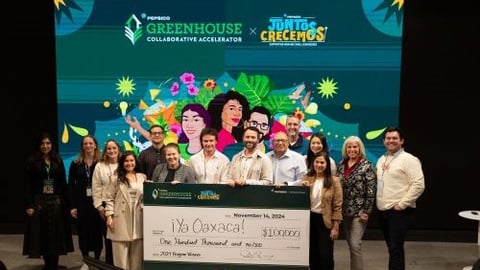What's Trending in Frozen Foods?
As consumers continue to prepare and eat more foods at home, they’re moving in from the store perimeter to the frozen food aisle on many of their trips. According to data from Chicago-based insights firm Circana, 28% of grocery store visits include at least one frozen food item.
That data point and others were included in the new “Future of Frozen Food 2025 Report” from Conagra Brands. This year’s report spotlighted trends that are a continuation of recent behaviors, along with other emerging preferences and habits affecting frozen food R&D and sales.
RELATED: Conagra 1st to Add ‘GLP-1 Friendly’ Label to Food Packaging
“Frozen foods play a critical role in what we call ‘stock-up trips’ to the grocery store,” affirmed Bob Nolan, SVP, demand science at Conagra Brands, during a recent webinar focused on the report’s findings.
According to Nolan, the company’s demand science team tweaked the study this year to delve into nuances among generations. “When we look at Millennials and Gen Z, we are trying to understand what they eat today and how everyone will eat tomorrow. For example, I didn’t grow up eating sushi, and I talk to people now and ask, ‘What is your kid’s favorite food?’ and they will say ‘sushi’,” Nolan noted.
Some of those shifting tastes showed up in this year’s trends. For example, Conagra highlighted surging demand for diverse flavors found in global cuisines, evident in frozen offerings like Indian-style tikka masala and authentic street foods. Per the CPG company’s report, 24% of younger consumers are more likely to purchase globally inspired products. Younger cohorts are also into hot and spicy foods, with 48% of Gen Z consumers more likely to buy spicy frozen meals.
Likewise, Millennial and Gen Z shoppers who grew up snacking are fueling interest in bite-sized frozen foods. Conagra’s report showed that sales of bites and mini portions have reached $2.4 billion, with a 31% spike in year-over-year consumption. What’s more, 84% of those products are now being enjoyed as meals.
While younger shoppers are driving many trends, the overall frozen food marketplace is affected by steady interest in products that fall under the better-for-you umbrella. Conagra’s report noted the rise of frozen products that cater to gut health, portion control and other dietary needs, and revealed that frozen foods with probiotics and nutrient-dense, gut-friendly ingredients have grown 33% over the past three years.
As part of the health and wellness push, the analysts anticipate sustained or growing use of GLP-1 medications that help consumers manage weight and certain health conditions like diabetes. More than 15 million Americans are currently using GLP-1 medication, Conagra’s report confirms, leading to new ways of creating and marketing products for such users. “We have been tracking the usage of these drugs over the past two years and understanding the needs of these consumers, who are looking for portion control, high protein and high fiber. We just announced new Healthy Choice Bowls with an on-package ‘badge’,” reported Megan Bullock, director, predictive science at Conagra Brands, citing labels signaling that the products are “GLP-1 friendly.”
Meanwhile, a broader cross-section of frozen food consumers is choosing products that deliver on both value and experience, as people continue to lean into at-home consumption. Conagra’s data science team concluded that shoppers are recreating restaurant dishes at home and appreciate premium, chef-inspired and celebrity-backed items that help them save on prep time. “Food in the frozen space has changed a lot in the last five or six years, and now folks expect high-level quality and convenience with it,” Nolan observed.
As for how they make frozen foods, Conagra’s analysts found that people continue to use air fryers and are now adding other air fryer accessories and even a second air fryer to their home kitchens. Secondary freezers and refrigerators are also enabling people to stock up and store more frozen foods to have on hand for easy meal preparation.
Chicago-based Conagra Brands produces a variety of frozen foods brands, including Birds Eye, Healthy Choice and Marie Callender’s.







